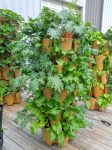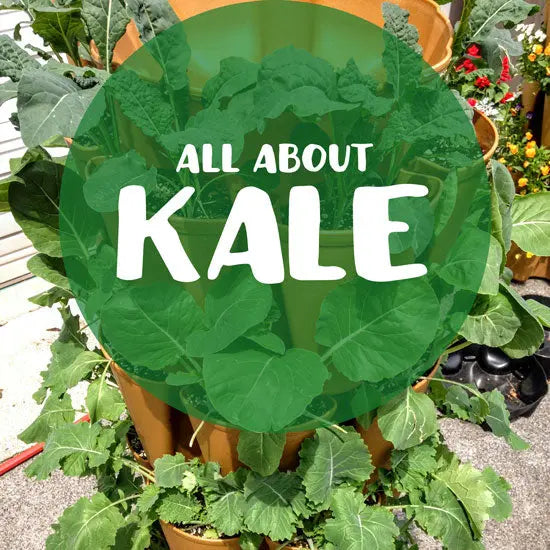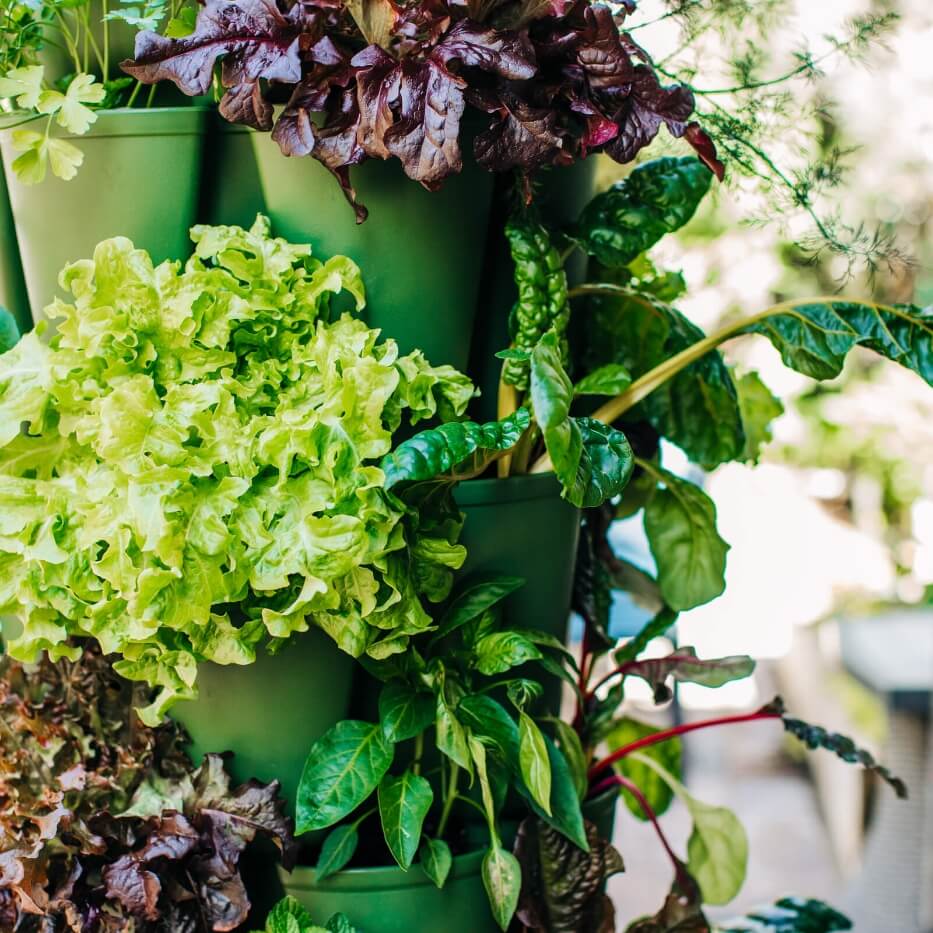Kale: A new food for many, a nutritional wonder, a crinkly and sometimes fuzzy veggie and a must for your garden. It would be a shame not to grow kale – it's easy to grow, a health food necessity and it regrows throughout the season(s). If you're looking for more food to grow in your own garden and want to learn the methods of doing it effectively, you can read about a workshop here that teaches the basics of garden-based nutrition, what your diet should consist of, and how you can do it all for yourself.
We grew Kale last year and are continuing to grow it this season at GreenStalk. Also, I'm growing it in my personal GreenStalks at home. Here are the varieties we are currently growing: Red Russian Kale, Redbor Kale and a sort of plain-leaved kale variety we can't remember. Each kale plant will produce an impressive number of leaves and will produce for several weeks. We usually plant 1-3 kale plants per pocket (depending on variety). Each leaf can grow to be over a foot in length so even if you plant just a few, you'll have a whole bunch to use in the kitchen!

Kale Basics
It's in the same family of broccoli and cabbage and super easy to grow in spring or fall. It is considered a cool weather crop. When preparing in your kitchen, be sure to remove the center stem on the kale leaf – you don't want to eat that! Kale grows relatively easily and we find that it doesn't require any "special treatment" when it comes to potting soil and fertilizer. You can see what we used for this year's crop here.
Seasoning ideas
Salt & pepper, vinegar, garlic, bacon all go well with kale.
Uses
Raw kale salad, hot soup or broth, raw in fruit smoothies, baked for chips and you can often "sneak" kale into many of your favorite meals. I made an Indian curry last week with sliced kale and it was wonderful. Keep in mind kale loses some of its nutritional qualities when boiled, with the exception of Vitamin K (an aid for bone and tissue health). All other forms of cooking Kale don't significantly decrease its healthful gifts.
How to Harvest
Grab a leaf whether small or large and cut it near the base of the stem. If you want Kale to continue to grow, then do not cut past the base of the stem. It should snap off easily. You don't need to wait for a certain color or size to begin harvesting. My Kale seemed to sky-rocket after staying relatively the same for a few weeks so if you're going out of town, you may come home to some HUGE Kale.

Pests
Kale does have a few pests that like to stick around including: cabbage worms, aphids, whiteflies, and flea beetles. We suggest regularly inspecting your Kale stem and leaves on the top and underneath the leaves for any aphids, cabbage worms or butterfly casings. If you see any, remove the leaf or wipe the stem clear. Some suggest just taking your hose and spraying the affected area to remove the unwanted guests. Either way, get rid of them so you won't have holes in your leaves. If you do get an infestation towards the end of your growing season, we recommend just harvesting the entire crop because often times the worms will take over and you won't have much kale left for cooking.
Cool Tip!
Kale is not normally sweet by any means, but as cool weather and frosts continue to hit, it takes on sweet undertones. Yum!

As you can tell, there are a lot of reasons to add kale to your garden. What's your favorite leafy green to grow? Let me know in the comments section below!
Ashley Skeen
Ashley@GreenstalkGarden.com











